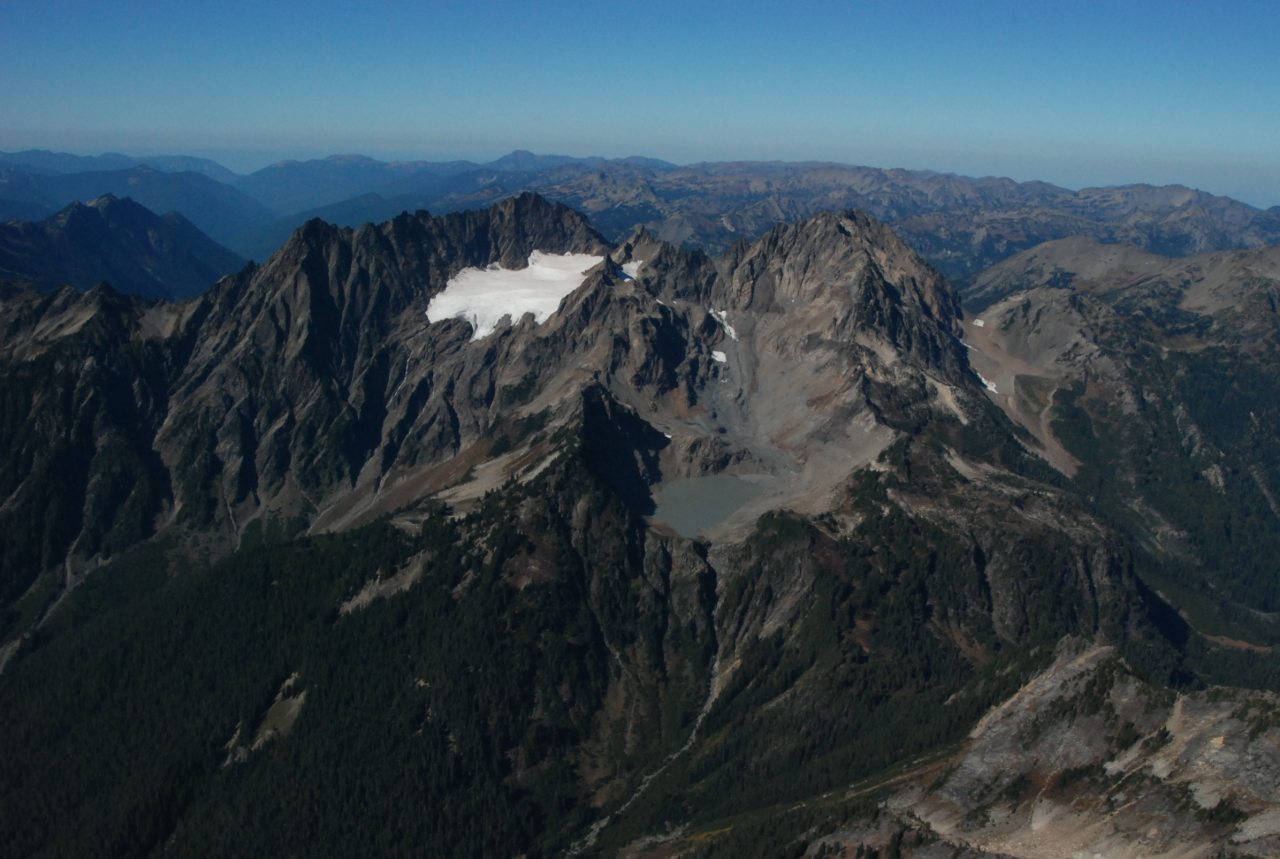

Hanging Glacier and the Loss of Blue"Can a color become endangered? When I started this project I dreamed of a fat, juicy, white glacier with layers and layers of glacial blue. Glacial blue is the color we see at the edges and fissures of glaciers. Heavy ice and snow builds up over time compressing out air in the glacier and forming dense crystals. The crystals absorb long waves of sunlight then release short waves of light in the blue color we perceive. We see blue ice in the deeper layers of the glacier. I’ve been nose to nose with a few glaciers in Alaska and that blue is magical. Thus I dreamed of glacial blue. "While visiting glaciers in Alaska I happened upon a talk about ice worms. Ice worms????!! Like glacial blue, ice worms are magical and mysterious. They live their lives in glaciers from Alaska to the Olympics eating algae, bacteria, and anything else small enough to nosh on. I asked the man giving the talk how ice worms benefit glaciers? He looked at me as if I’d gone mad. Apparently ice worms aren’t much studied, so here’s my own scientific mythology of how ice worms benefit glaciers: In the Winter, the worms burrow deep into the glacial blue where they live in cozy tunnels and tell stories about long, heavy nights under weighted blankets of solid ice. In the Spring, the worms talk of loosening surfaces, birthday parties, and glowing light. In the Summer, the worms bask, read skies, and picnic in surface slush baths. In the Fall, they speak of soft snow, hardening up, and of nights growing long as they prepare to burrow . The worms keep the glacial cycle of memory. continued below 
"This memorial piece was created with hand and commercial dyed burlap, variegated thread, beads, fabric paint, sharpie, alcohol, Tyvek, heat and time. "The melted blue Tyvek frame represents the loss of blue. No more glaciers, no more glacial blue. "Thanks to Bill Baccus for being the glacial memory of Olympic National Park." -Diane Williams 

Meet the artist: Diane WilliamsHer husband thinks she’s a hoarder but she’s an artist. As Diane walks around, she picks up shiny, colorful objects and packs them away for future use. Colorful bits of scavenged garbage become quilts, and dolls and books, as well as a giant mess on the floor. Diane is primarily a fiber artist. She began making art dolls while enduring a stressful job as a high school English teacher in a beautiful place, The Grand Canyon. Art Doll making was a flow, an escape, and a reason to walk around the awe inspiring Grand Canyon head down looking for material on the ground. Her work started to be admired and in 2001 she placed second in the Sulky Challenge, an international art doll and quilt competition, and was given an honorable mention in 2002. Diane moved to Port Angeles, Washington in 2006 and began quilting because who needs a quilt in Arizona? She quickly grew bored with traditional quilting and started messing with form and material, discovering that junk food wrappers could be washed, ironed and sewn, and learning that the building material, Tyvek, could be painted and burned to create lovely fairy wings as well as a desolate scene of glacial loss.
Since then she uses trash that she finds on rambles throughout the world to make quilts, dolls, and books. Flattened cans are treasured finds and have provided bodies for dolls and pages of books. A book made from flattened cans in 2018 titled “Trash Talk” is in the Cynthia Sears collection of artist’s books at The Bainbridge Island Museum of Art. A flattened can doll titled Sunkissed is in the modern doll collection at The Texas Quilt Museum. Her art quilts and dolls have been shown in Flagstaff, Port Angeles, Sequim, Port Townsend, Seattle, and Houston among other places.They have appeared in newspapers and magazines. She is inspired by garbage, and the colorfully unnatural. Also insects, literature, music and carpets in Las Vegas casinos. 
More about Hanging GlacierHanging Glacier is a permanent snowfield on the east side of Mt. Anderson. It is on the right out of view beyond the pass (pictured). The obvious glacier on the left is the Linsley's glacier which you can see easily from Enchanted Valley. Because it hangs above Enchanted Valley, Linsley's is often mistaken for the Hanging Glacier. The small snow field above the lake in the middle is the remains of the Anderson Glacier. The Hanging would be to the right, on the other side of the pass. It is on the north side of Mt. Anderson, and flows into the main fork Dosewallips River. 
|
Last updated: April 10, 2023
